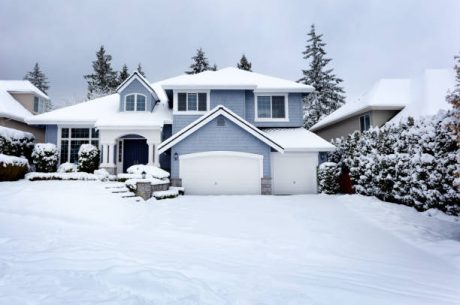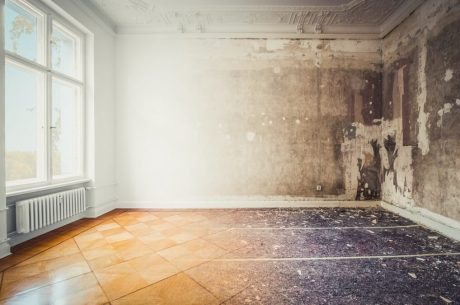Home Reconstruction After Fire Damage
In the wake of a devastating fire, the journey to rebuild a home transcends mere physical reconstruction; it becomes a testament to resilience, hope, and the unwavering human spirit. The aftermath of a fire can leave families grappling with overwhelming emotions and logistical challenges, yet it also presents an opportunity for renewal and transformation.
In this blog post, we delve into the intricate process of home reconstruction after fire damage, exploring the steps, considerations, and invaluable insights gleaned from those who have embarked on this arduous yet ultimately rewarding path.
The reconstruction of a home after fire damage embodies this timeless narrative of resilience and renewal. It is a testament to our innate ability to rise from the ashes, rebuild what was lost, and forge ahead towards a brighter tomorrow.
Join us as we embark on a journey of transformation, exploring the intricacies of home reconstruction after fire damage. Our professionals handle reconstruction services and your home becomes like he damage never happened, Call Us on (877) 750-7876.
Steps to Rebuilding Your Home After a Fire
Here are the essential steps to guide you through the process of Home Reconstruction After Fire Damage:
1. Assess the Damage:
Before beginning any reconstruction efforts, assess the extent of the damage to your home. Work with professionals such as fire inspectors, structural engineers, and restoration specialists to thoroughly evaluate the condition of the property.
2. Secure the Property:
Ensure that your property is secure and safe to enter. If necessary, board up windows, doors, and other openings to prevent unauthorized access and further damage from weather or vandalism.
3. Contact Your Insurance Company:
Notify your insurance company of the fire and begin the claims process. Provide them with detailed documentation of the damage, including photographs, videos, and inventory lists of lost or damaged items.
4. Hire a Reputable Contractor:
Select a licensed and experienced contractor who specializes in fire damage restoration. Seek recommendations from friends, family, or your insurance company, and obtain multiple quotes before making a decision.
5. Develop a Rebuilding Plan:
Work with your contractor to develop a comprehensive rebuilding plan that outlines the scope of work, timeline, and budget. Consider factors such as building codes, permits, and architectural designs during this planning phase.
6. Obtain Necessary Permits:
Obtain any required permits from your local building department before commencing construction. Your contractor should assist you in obtaining the necessary approvals and ensuring that all work complies with local regulations.
7. Demolition and Cleanup:
If any parts of your home are beyond repair, such as severely damaged walls or flooring, these will need to be demolished and removed. Once the debris is cleared, the site should be thoroughly cleaned to prepare for reconstruction.
8. Structural Repair:
Begin the process of structural repair, which may involve rebuilding walls, floors, and roofs. Ensure that all repairs are carried out by qualified professionals and meet building code requirements for safety and stability.
9. Electrical, Plumbing, and HVAC Systems:
Inspect and repair or replace damaged electrical, plumbing, and HVAC systems to ensure they are safe and functional. This may include rewiring, installing new plumbing fixtures, and repairing or replacing heating and cooling equipment.
10. Interior Finishes:
Once the structural work is complete, focus on interior finishes such as drywall installation, painting, flooring, and cabinetry. Choose durable and fire-resistant materials to reduce the risk of future damage.
11. Exterior Restoration:
Restore the exterior of your home by repairing or replacing siding, roofing, windows, and doors. Ensure that all exterior finishes are weatherproof and properly sealed to protect against moisture and other elements.
12. Final Inspections and Approval:
Schedule final inspections with your local building department to ensure that all work meets code requirements and receives approval for occupancy. Once inspections are passed, you can move back into your newly rebuilt home.
Finally, celebrate the completion of your home rebuilding project and the resilience of your family. Take this opportunity to create new memories in your restored home and appreciate the journey of rebuilding after adversity.
In conclusion, rebuilding your home after a fire is a challenging yet ultimately rewarding journey. It requires careful planning, perseverance, and the support of professionals, friends, and family. By following the essential steps outlined in this guide, you can navigate the reconstruction process with confidence and restore your property to its former glory.
With the help of restoration professionals like us, you will find the whole reconstruction process easy and seamless.
Need a Reconstruction Service in New Jersey?
Quickly contact PuroClean Emergency Recovery Services New Jersey to reconstruct or rebuild after damage on (877) 750-7876.
FAQs
Cost to Do Fire Damage Restoration Work Yourself
Thinking about attempting fire damage restoration on your own? Think again. Once your home has been affected by fire damage, DIY solutions are off the table. It’s crucial to enlist the expertise of a licensed fire and smoke damage restoration professional in your area to handle the cleanup and restoration work. Not only is attempting it yourself extremely hazardous, but it could also jeopardize your insurance coverage.
Fire restoration professionals specialize in salvaging and restoring items, eliminating soot, and eradicating lingering odors. They possess the knowledge, equipment, and experience necessary to ensure the restoration process is conducted safely and effectively.
What is the first step in fire damage restoration?
The first priority is to bring in a professional promptly to address moisture control, particularly if water was used by authorities to extinguish the fire. Neglecting moisture removal leaves your home vulnerable to mold and rot, which can further damage your property and pose health risks.
How long does fire damage take to repair?
The duration of fire damage repairs can vary widely, ranging from a week to several months, depending on the extent of the damage. For minor damage confined to specific areas, the repair process may be completed within a week. Conversely, significant fires that affect larger areas necessitate more extensive labor and may require several months for complete restoration. To obtain an accurate estimate tailored to your circumstances, consult with your restoration team.
Home reconstruction after fire damage cost:
how much does it cost to rebuild a house after a fire –
The cost of reconstructing a home after fire damage can vary significantly depending on factors such as the extent of the damage, the size of the property, and the materials needed for restoration. On average, homeowners can expect to pay anywhere from $3,000 to $30,000 or more for minor repairs, while extensive damage could cost upwards of $50,000 to $150,000 or higher. It’s crucial to obtain estimates from licensed contractors and work closely with your insurance company to determine coverage and budget accordingly.
How to repair a house with fire damage:
Repairing a house with fire damage requires a systematic approach that involves several key steps. First, ensure the property is safe to enter and secure against further damage. Then, assess the extent of the damage and prioritize tasks such as removing debris, cleaning soot and smoke residue, repairing structural damage, and restoring damaged areas. Depending on the severity of the damage, you may need to enlist the help of licensed professionals, including fire restoration specialists, contractors, and inspectors, to ensure thorough and safe repairs.
What needs to be replaced after a house fire:
After a house fire, several items may need to be replaced, depending on the extent of the damage and the severity of the fire. Common items that often require replacement include structural components such as walls, floors, and ceilings; electrical wiring and fixtures; plumbing fixtures and pipes; insulation; HVAC systems; appliances; furniture; personal belongings; and any items damaged beyond repair by fire, smoke, or water.
Buying a house with previous fire damage:
Buying a house with previous fire damage can be a viable option for some buyers, but it’s essential to proceed with caution and thorough due diligence. Before purchasing the property, obtain a comprehensive inspection by a qualified professional to assess the extent of the damage and identify any potential hazards or issues. Consider consulting with contractors and fire restoration specialists to obtain estimates for repair and restoration costs. Additionally, review the property’s history, including any insurance claims or permits related to fire damage, and factor these into your decision-making process.
Fire restoration checklist:
A fire restoration checklist typically includes the following steps:
- Ensure safety: Verify that the property is safe to enter and secure against further damage.
- Assess damage: Evaluate the extent of fire, smoke, and water damage to the property and its contents.
- Document damage: Take photographs and inventory damaged items for insurance claims.
- Mitigate further damage: Take immediate action to prevent additional damage, such as boarding up windows and tarping roofs.
- Remove debris: Clear away debris and damaged materials from the property.
- Clean and sanitize: Thoroughly clean and sanitize all surfaces, including walls, floors, and belongings, to remove soot, smoke residue, and odors.
- Repair and restore: Repair structural damage, replace damaged materials, and restore the property to its pre-fire condition.
- Test and inspect: Test systems such as electrical, plumbing, and HVAC, and inspect for hidden damage or hazards.
- Reoccupy safely: Ensure the property meets safety standards before reoccupying or resuming normal activities.



